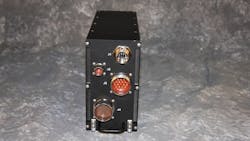Collins Aerospace Developing Open-Architecture Radio for USAF
Military radio requirements change so often that software-defined-radio approaches are almost mandatory. To go a step further, Collins Aerospace Systems, a unit of Raytheon Technologies Corp., is developing a Software Programmable Open Mission Systems Compliant (SPOC) radio for the U.S. Air Force as part of a $18.9 million competitive contract awarded in 2019. The open architecture enables the radio to adopt new waveforms, cybersecurity updates, and other modifications via software programming. The radio development program is scheduled for a first-quarter demonstration in 2021, after having successfully completed its preliminary design review and critical design review on time. “We’ve been delivering open architecture solutions for military avionics for decades, and we’ve leveraged that expertise to develop more open, modular communications and connectivity systems that will help our customers keep pace with evolving threats and technologies,” said Ryan Bunge, vice-president and general manager, Communication, Navigation and Guidance Solutions for Collins Aerospace.
To maintain connectivity during critical times and challenging operating environments, the three-channel SPOC radio will be capable of handling three different radio waveforms simultaneously: Link 16, Bandwidth-Efficient Common Data Link (BE-CDL) waveforms, and Mobile User Objective System (MUOS) waveforms. With software programmability, a single radio (see the figure) will provides new capabilities while maintaining connectivity to legacy systems on air and ground platforms.
About the Author
Jack Browne
Technical Contributor
Jack Browne, Technical Contributor, has worked in technical publishing for over 30 years. He managed the content and production of three technical journals while at the American Institute of Physics, including Medical Physics and the Journal of Vacuum Science & Technology. He has been a Publisher and Editor for Penton Media, started the firm’s Wireless Symposium & Exhibition trade show in 1993, and currently serves as Technical Contributor for that company's Microwaves & RF magazine. Browne, who holds a BS in Mathematics from City College of New York and BA degrees in English and Philosophy from Fordham University, is a member of the IEEE.
